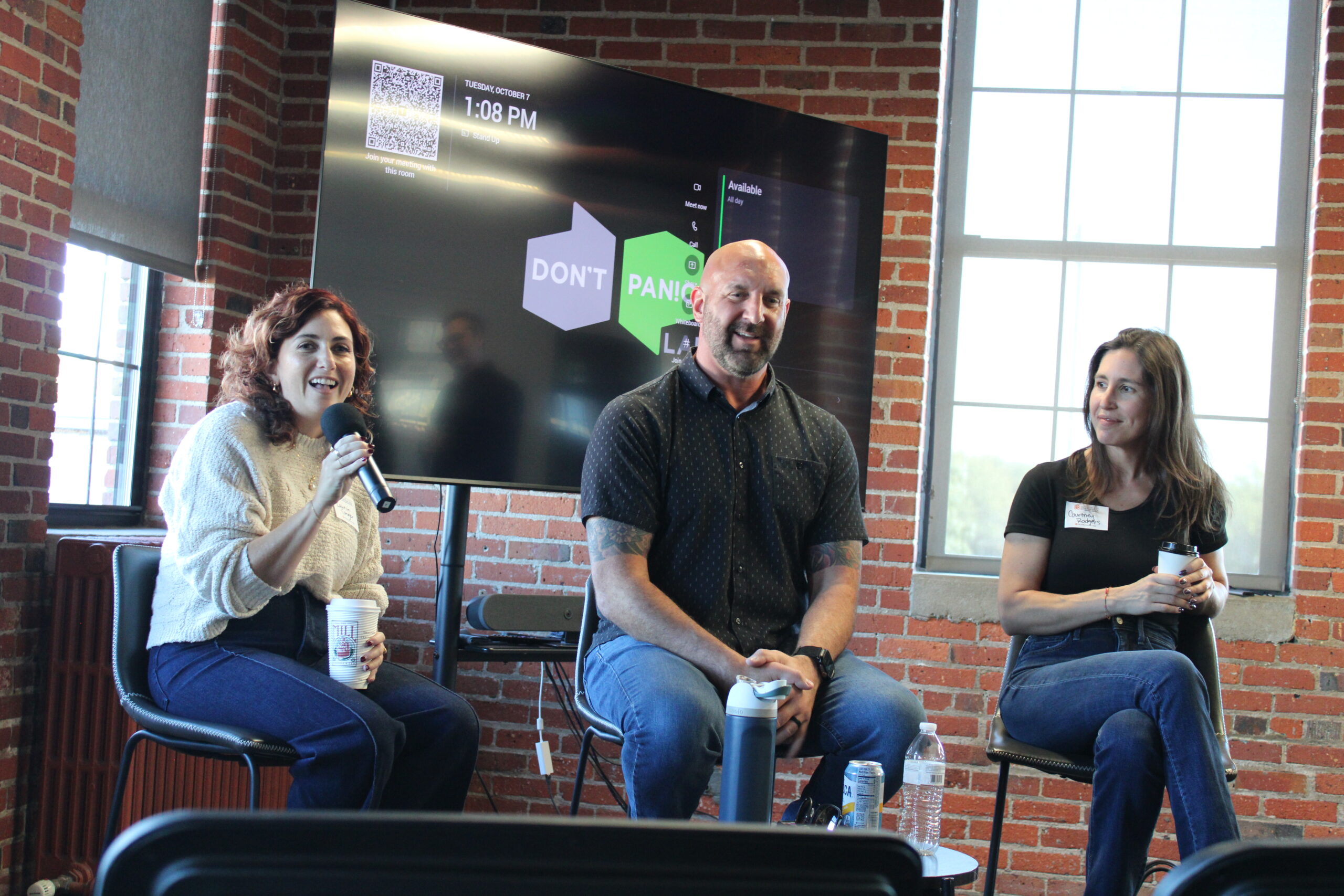Shortly after Courtney Rodgers, senior vice president of business operations at Hudl, joined the startup, Hudl made an acquisition that highlighted the challenges with scaling a company. Buying Sportstec, an Australian sports analysis business, came with a host of issues.
“We were essentially merging two businesses together that not only had pretty different … company cultures in general — but also the cultural differences between the business community in each country was wider than we expected,” Rodgers said during a panel at Silicon Prairie Startup Week. “There’s just this moment where it’s like, ‘Oh my goodness, we have to solve this and we have to solve it now.’”
But eventually, Rodgers learned that that wasn’t really a problem. Rather, these kinds of issues are a sign that a business is actually scaling. Other speakers on the “How to Scale from 10 to 10,000” panel, hosted at Don’t Panic Labs, agreed with Rodgers.
Scaling is something startup founders are always trying to do, but judging scale by metrics and experiencing sudden large changes are two different things, the panel said. Growing a business comes with pain points, but scaling is when processes really break.
“Everything that used to work stops working,” said Lauren Conger, the former vice president of people at CompanyCam. “You can be in pre-scale for a really long time, and then it comes really fast.”
At CompanyCam, a cash infusion led to hiring many new employees — and the need to suddenly clarify expectations. There was a need “to make the implicit explicit,” Conger said. “We just assumed that everyone knew how we worked and how we behaved and how work gets done.”
Adjusting to scale
Scaling a startup can take a toll on founders and leadership, especially when they focus on the minutiae of the day-to-day business. Some founders also struggle with micromanaging and feeling like they have to be involved in every part of the startup.
At Bulu, Co-Founder and CEO Paul Jarrett had that issue. But over time, he learned it was better to have more intentional hiring and let employees take responsibility for their work.
“I always kind of talk with my team, and I’m like, ‘Look, sure you can get involved in that lease, or you can get involved in that negotiation or whatever,’” Jarrett said. “You might make it like 10%, 20% better, but you’re causing 50% more agony for somebody.”
It’s also important for startups, at times of great change, to not just be putting out fires. Sometimes, planning for scale means slowing down to think more clearly and paying attention to how problems are being solved.
“As a CEO or leader, you need to kind of step back and realize you’re building two products,” Conger said. “You have your business product, but you’re also building work, and you’re building the way people work, and that itself is a product that you are creating, and within that you have to be nimble and iterative.”
Responding intentionally to scale can also help avoid some of the pitfalls of growth. Hudl started with a more independent atmosphere built around “two-pizza teams.” That worked at a small startup, but not at a scaling business. The people making changes, however, had to make sure Hudl’s company culture was still recognizable.
“We had to make some choices on how we put some more structure and scale in place … without losing the spirit of what we were trying to build,” Rodgers said. “If you over-design or overreact to the problems, and you throw everything in the trash right away, you’re going to end up regretting it. But some of that, you just have to learn by trying things, too.”
Building in Nebraska
Part of the calculation any founder has to make is geographic: Especially during scaling, does it make sense to leave Nebraska? For this panel, the answer was no. There’s a sense of pride in the state. And even if there are more business incentives in other metros and states, “the baseline cost of living here, that is the competition,” Jarrett said.
“As hard as some things are to do here, there’s a lot of positives around here — and I think that goes for every category,” he said. “Like, oh, there’s no VC money here. There’s actually a lot of family offices here, right? So you just have to think about things differently.”
While Hudl now has offices in 18 countries and employees in 26 countries, the company is devoted to being headquartered in Lincoln, Rodgers said. She pointed to the benefit of having the University of Nebraska-Lincoln in Hudl’s backyard and being able to work with passionate graduates. Company partners from outside the state also regularly speak to the quality work ethic in Nebraska, which also defines Hudl.
But looking for talent outside Nebraska also brought its own lessons. “When we started to do that, it was because we were concerned that we couldn’t find top tech leadership to support scaling our product,” Rodgers said.
“Part of that was true, but honestly, the pendulum swung a little too far in that direction,” she said. “It’s something we’ve tried to put some better guardrails on, because we have been able to either find the talent we need here, for the most part, or get people to relocate to the Midwest.”
But there’s another benefit to having employees outside of Nebraska: the surprise factor when they come for company meetings. At CompanyCam, that was one of Conger’s favorite things to see.
“Listening to people, and seeing them when they’re like, ‘Oh my gosh, it’s actually so cool here,’” she said. “So being able to have that hybrid universe where you’re headquartered here, and bringing people in, so they can go back out and tell people, ‘Nebraska is actually really nice.’”
Lev Gringauz is a Report for America corps member who writes about corporate innovation and workforce development for Silicon Prairie News.




Leave a Reply